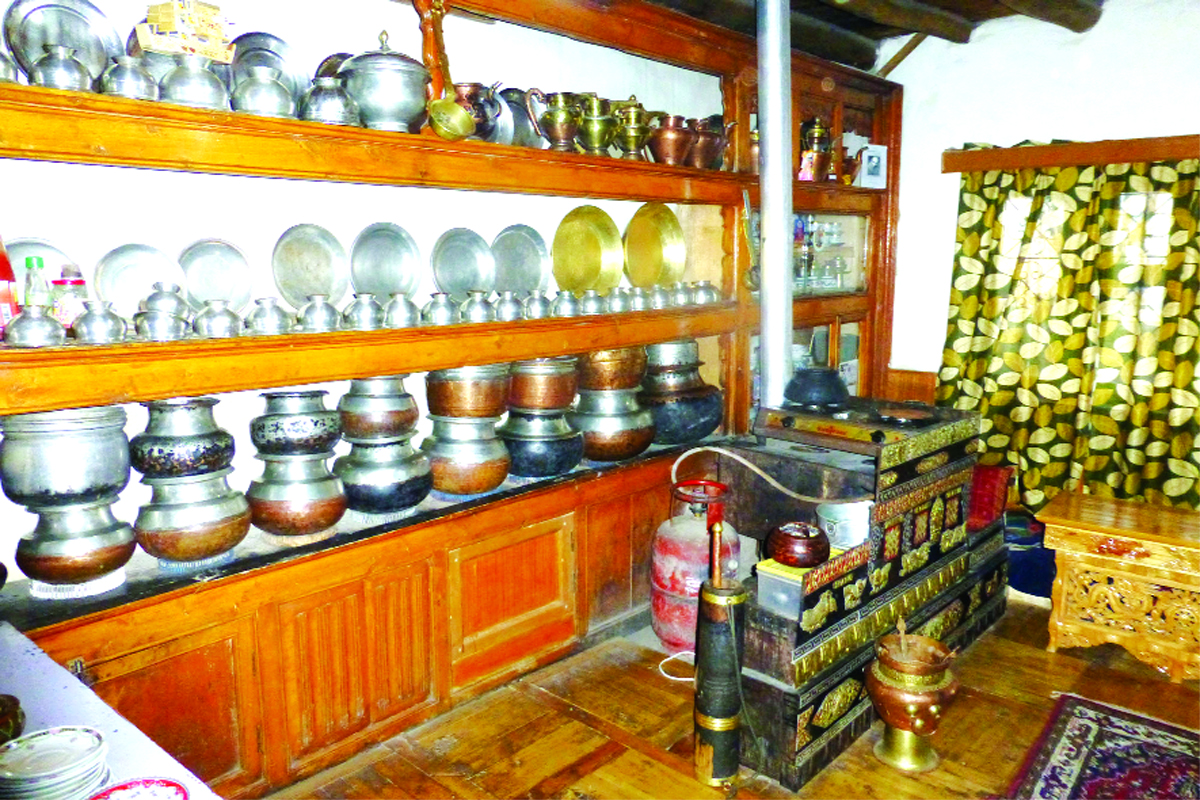Yangchan Lamo
Ladakh has much more to offer the foreign tourist than just its primitiveness. Leh district in particular is very beautiful and at the same time very cold. The people here are very kind hearted and broad minded.
Ladakh was thrown open for tourists in 1974, and is only accessible for six months of the year.
Most of the Ladakhi dishes have almost common and minimal ingredients, wheat and barley flour are used in almost every local dish. Most of the ingredients are locally grown. Wild vegetables and herbs are used in most of the dishes. Kabra, Khala, Porokshkang, Sagam, Shangsho and Solo are some herbs you will find in many Ladakhi dishes. In the spring or early summer months the vegetables are grown and driedso that they can be used later on in the winter months (October to March). People also add modern branded spices and flavoursin their local dishes nowadays. Vegetables and other food products are imported from other parts of the countryon a large scale.
Migrant workers coming to work in Leh usually carry bags filled with cabbage, cauliflower, garlic, onions, brinjal, tomatoes and other vegetables which are sold at exorbitant prices especially during the winter months.
The staple diet of the region is Barley, which is roasted and ground for use as flour (Ngamphey). It is also used in the making of local beer called Chang, for a quick and nutritious meal, the warm Kholak made up of a mixture of butter tea and Ngamphey, is one of the most famous foods of Ladakh.
Most of the foods of Ladakh are easy to make, simple, least fuel consuming, with the ingredients available locally. The majority of the dishes prepared are sustaining foods for the people of this remote region.
There are varieties of dishes prepared from the wheat and barley flours. Each dish having its own importance in the daily life of the Ladakhi people. From bread to soups the same ingredients are used.
The kitchen is the usual gathering place for the household members, neighbours and visiting relatives. The focal point of the room is the hearth (thap). The thap is built against one of the four walls which are lined with shelves (langs), more or less carved. It is surrounded by a line of choktse (low tables).
The most decorated and well equipped part of a Ladakhi house is its kitchen. It is a large room, at least with one or two wooden pillars. ‘Thap’ the metal craft stove is the pride of every Ladakhi kitchen. It is decorated with lots of semiprecious stones and brass.
Ladakhi kitchensare also used as dining rooms as well as guest rooms as theyare well decorated and warm in the winter months.
Nowadays, Ladakh is also getting affected by globalization in all aspects. As a result people arebeginning to sell their traditional cooking utensils to foreigners who pay a good price to them.
The owner of GotalGuest House Mr PhuntsokNamgyal says,”We have lots of ancient things”. Showing us the different utensils and kitchen stuff he says, “In ancient times people used this kind of gas which is known asThap. Earlier people used to make their own food like Bpapa, (Wheat flour dumpling) Thukpa, Sku, Timok etc. People used to use wood and cow dung for cooking their food. There were no gas cylinders, so people used Thap(ancient gas) throughout the year but now days, in Leh Thap is only used in winter season.
It is very useful for the people during winter time, but today people are using heaters instead ofThap. People used to have lots of butter tea that’s why they kept the kettle on the fire pot. In Ladakh it’s called (Thipril).They mixed butter and salt tea in Gurgur.They used to have their tea in a wooden cup.Ladakhi people were very fond of alcohol like Chang andAraak.
They kept it in a big mud pot so that it always remains cold. Thukpa is also a very famous dish in Ladakh. Infact you can say that it is thehealthiest food in Ladakh. If someone is ill people always feed them Thukpa because it is like medicine. It is cooked in a big black pot. In Ladakhi itis called Doltok, which was very famous in Ladakh in oldendays.
Ladakhi people also used to have Kholakwhich is very good for our health. Kholak is a dish which is full of nourishment, when we are goingto make it, we need a bowl.The traditional bowl used is called Gormoin Ladakhi”.
Stanzin, a student says,”Earlier we used vessels and utensilswhich could be termed as ‘Vintage’, but with the passage of time we have stopped using those things and gone in for modern equipment”.
He adds, “Do we really usetraditional things now days? In the 21stcentury people are using western things in the place of our own traditional things. In Leh and nearby villages, houses are well equipped with modern cooking equipment like LPG stove, electric cooker, solar cooker, mixer, fridge and all other small modern designed tools are available. Traditional stove is now days used as a show piece for the tourist and guest from outside. If we compare thesewith western things and our own traditional things we can see so many differences between them like plastic things which are very harmful for our health and for the environment”.
(Charkha Features)


